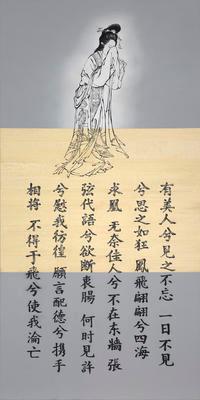Person
Artist
He Sen
何森
Date of birth
1968
Place Of birth
Kaiyuan, Yunnan, China
Biography
At the Sichuan Academy of Fine Arts, in Chongqing, with Zhang Xiaogang as his professor, He Sen was trained in the distinctively expressionist Sichuan style. From an early series of melancholy portraits of young women, and the dreamy, lingerie-clad contemporary odalisques cuddling soft toys for which he became best known, He Sen transitioned to a painterly examination of Chinese history and culture. His work has been shown widely, within China and internationally. In the 1990s and the early years of this century, He Sen’s paintings documented the lives of his generation, growing to adulthood in an increasingly consumerist society. His photo-realist portraits of young women lounging in anonymously bland interiors represented a poignant liminal zone between adolescence and adulthood, their dreams and desires as yet unrealised. Erotic yet curiously melancholy, these paintings critique the emptiness of materialism, and the loss of values in a society that the artist believed had been corrupted by wealth. Working in a tradition of post-Cultural Revolution Sichuan painters, whose ‘Scar Art’ represented what they thought of as a lost generation, examining the inner lives of individuals in a society emerging from collectivism, He Sen too cast a critical eye on his world. After 2005, however, He Sen turned to Chinese literary and artistic history, appropriating classical paintings. Reproducing elements of iconic Chinese works in oil paint rather than ink, embedding western painting conventions into the iconography of gong bi realism and ink painting, He Sen turned from a focus on the impact of society on the individual to an examination of Chinese culture more broadly. Similarly, by breaking into the painterly surfaces of flat oil paintings on canvas with stripes, squares or grids of heavy impasto paint (a reminder of the palette knife technique of his student days in Chongqing), He Sen breaks the illusion of pictorialism. He questions the very nature of painting itself: ‘Why should we deal only with what we see on the surface?’ he has asked. ‘In traditional Chinese art, meaning is not only on the surface; it involves the imagination and ideas.’






_dr.jpg)